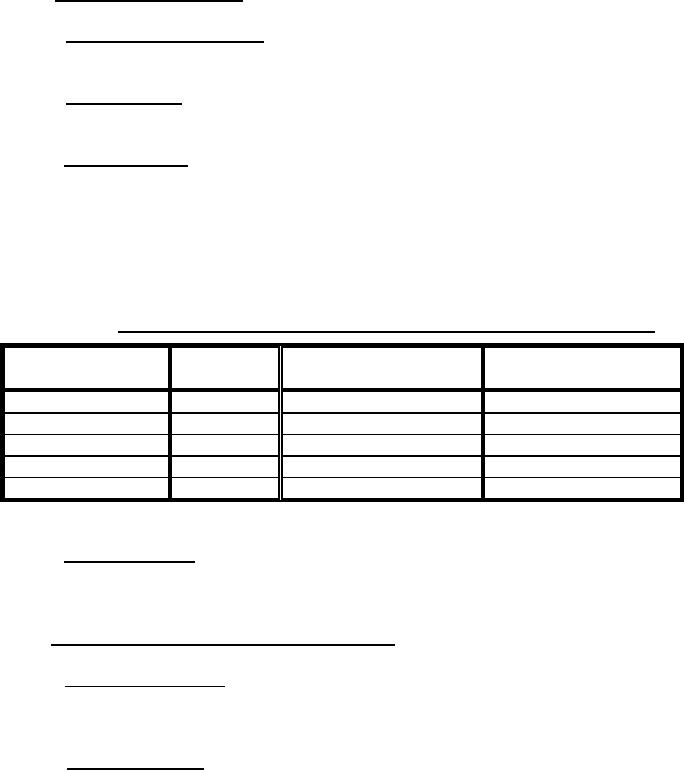
MIL-DTL-46100E (MR)
4.6.1 For first article inspection.
4.6.1.1 Chemical analysis samples. One sample for chemical analysis shall be taken from
each plate submitted.
4.6.1.2 Impact samples. At least three (3) impact test specimens in each direction (TL &
LT) shall be taken from each test plate submitted for ballistic testing.
4.6.1.3 Ballistic samples. Two (2) ballistic test plates of the same ordered thickness for each
nominal thickness range shown in Table V shall be submitted for ballistic testing and shall
represent any other thickness in the range. One sample shall be taken from the first plate
heat treated and one from the last plate heat treated in the initial lot produced. When only
one plate is heat treated, a sample shall be taken from each end of the plate. The ballistic
test plates shall be 12 inches by 36 inches.
TABLE V. Thickness ranges and corresponding test projectiles for first article testing.
Nominal thickness
Obliquity,
Test Projectile
Table
range, in
degrees
0.118 to 0.300 incl.
30
Cal .30 AP, M2
A-I
0.301 to 0.590 incl.
30
Cal .50 AP, M2
A-II
0.591 to 0.765 incl.
30
14.5 mm API, B32
A-III
0.766 to 1.130 incl.
30
14.5 mm API, BS41
A-IV
1.131 to 2.000 incl.
0
20 mm API-T, M602
A-V
4.6.1.4 Bend test samples. Unless otherwise specified in the contract or purchase order (see
6.2), two (2) samples shall be taken from each submitted test plate and shall be tested in
accordance with 4.8.4 and shall meet the requirements of 3.2.6.
4.6.2 Sampling for production acceptance inspection.
4.6.2.1 For chemical analysis. At least one (1) sample for chemical analysis shall be taken
from each heat in accordance with the applicable method specified in ASTM A751 (see
6.5).
4.6.2.2 For hardness tests. The Brinell hardness of each plate, as heat treated, shall be
measured in two places, one at each end of a diagonal on one surface of the plate. Image
analysis systems may be used to read the indent and compute the hardness and if the heat
treating process is continuous (not batch or oscillation), then the amount of testing may be
reduced to one measurement per plate. For Class 2 materials, hardness tests shall be
conducted in six places on each plate, one at each corner and roughly at both edges at the
center of one surface of the plate. If consistent hardness readings are obtained with
established process controls, hardness measurements may be reduced to 2 places on each
diagonal corner.
12
For Parts Inquires call Parts Hangar, Inc (727) 493-0744
© Copyright 2015 Integrated Publishing, Inc.
A Service Disabled Veteran Owned Small Business